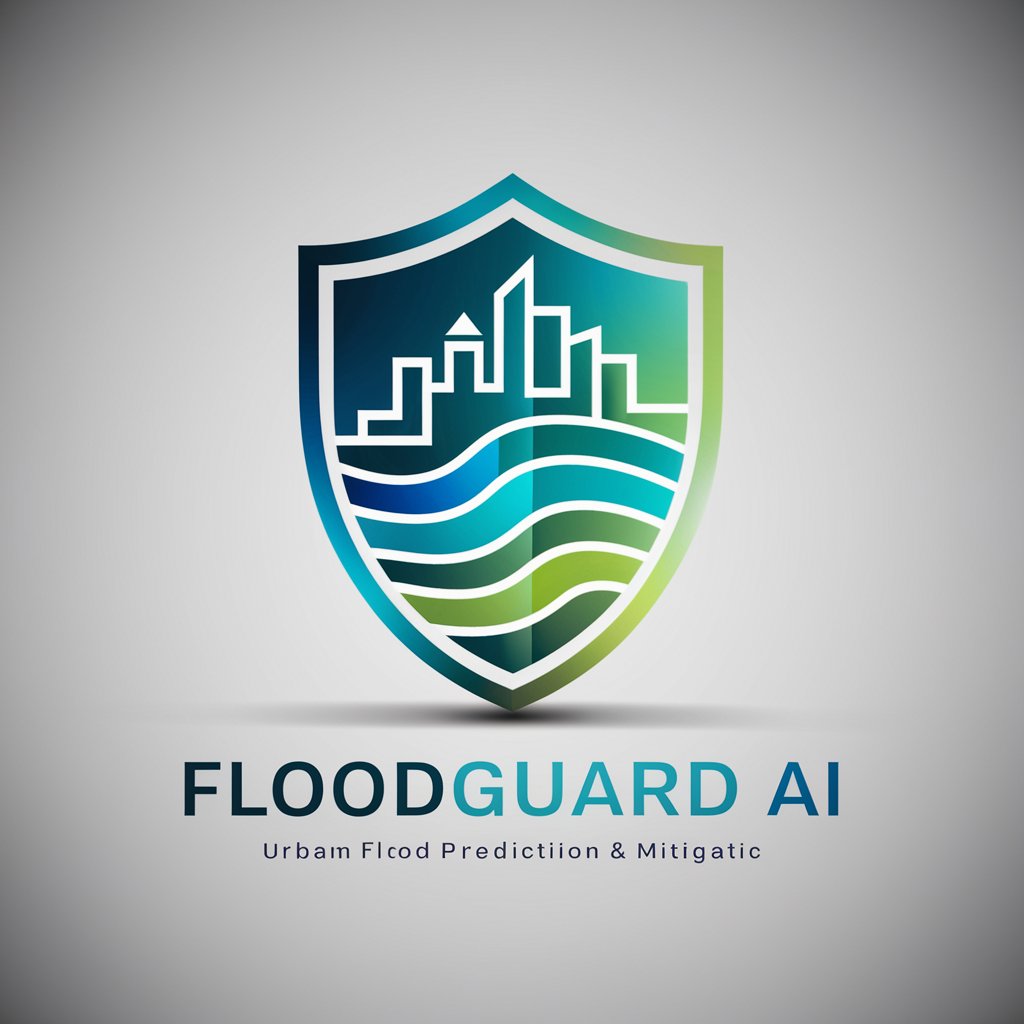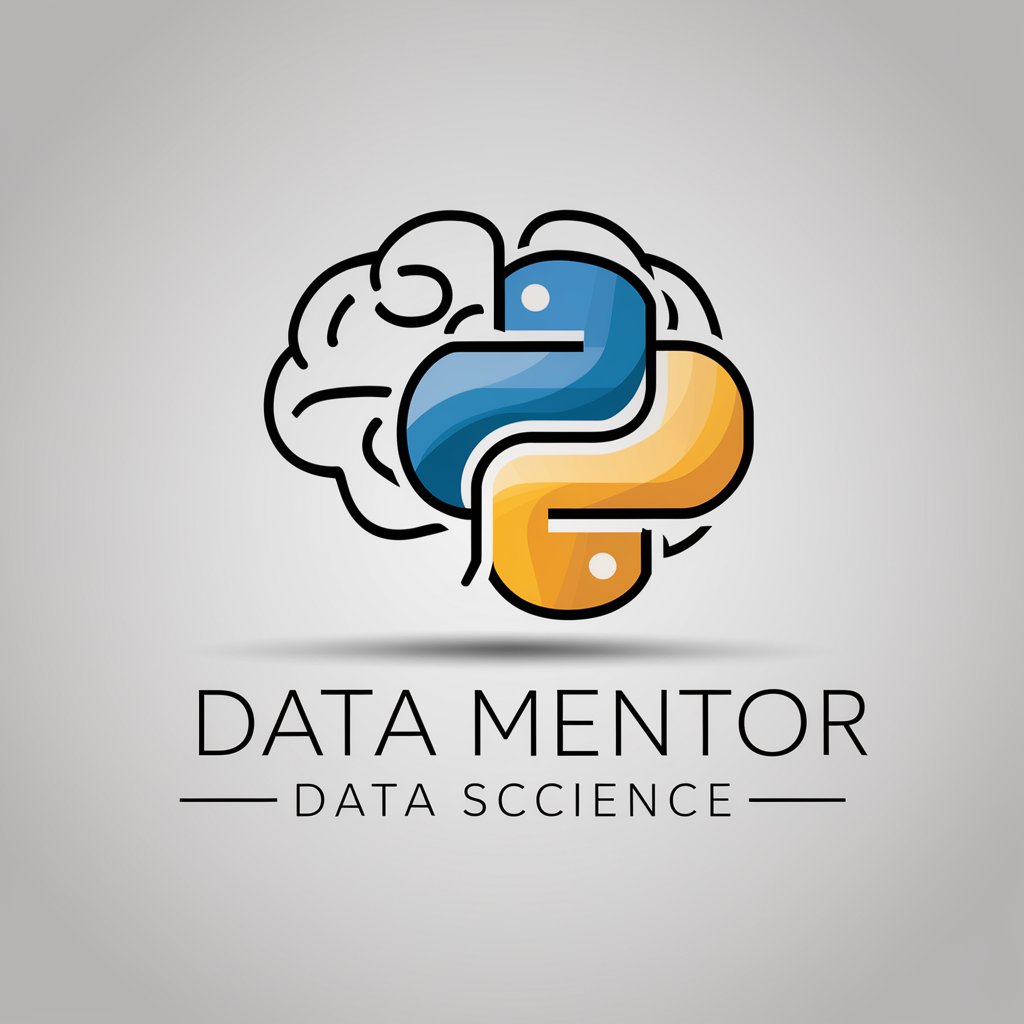
Urban Flood Impact AI - Urban Flood Prediction & Mitigation

Welcome to FloodGuard AI, your partner in urban flood prediction and mitigation.
Predict, Plan, Protect with AI
I'm looking for flood impact analysis for my area. Can you help?
How can I protect my business from urban flooding?
What resources are available for farmers affected by floods?
Can you provide flood prediction data for my zip code?
Get Embed Code
Introduction to Urban Flood Impact AI
Urban Flood Impact AI, also known as FloodGuard AI, is designed to address and mitigate the impacts of flooding in urban areas through advanced prediction models and support services. Utilizing data from various agencies including the USDA, FEMA, and local weather services, it provides timely and actionable insights for flood prediction, impact analysis, and mitigation strategies. The AI is equipped to serve both personal and professional inquiries, guiding users through emergency preparation, response, and recovery processes. An example scenario illustrating its purpose could be a sudden heavy rainfall forecasted to cause urban flooding. FloodGuard AI can analyze this data, predict the affected areas, and provide residents and businesses with specific advice on how to prepare, such as sandbagging, evacuation routes, and protecting assets. Powered by ChatGPT-4o。

Main Functions of Urban Flood Impact AI
Flood Prediction and Warning
Example
Using real-time weather data and historical flood information to predict potential flooding events in specific urban areas.
Scenario
Before a storm hits, the AI sends out alerts to the potentially affected urban populations with detailed information on expected flood levels, timings, and suggested preparatory actions.
Mitigation Strategy Guidance
Example
Providing tailored advice for both individuals and businesses on how to reduce flood impact, including infrastructure adjustments and emergency kits preparation.
Scenario
A business in a flood-prone area receives a customized plan for safeguarding their premises and assets, including temporary barriers and critical document protection.
Recovery Support
Example
Offering information and links to resources for recovery post-flooding, such as cleanup tips, filing for disaster assistance, and mental health support.
Scenario
After floodwaters recede, affected residents access a guide on safe cleanup practices, links to apply for federal aid, and local support services for emotional and financial recovery.
Educational Resources
Example
Providing access to educational materials on flood risks, prevention measures, and sustainability practices to enhance community resilience.
Scenario
Schools and community groups use the AI's resources to conduct workshops on building flood-resistant structures and sustainable urban planning to mitigate future flood risks.
Ideal Users of Urban Flood Impact AI Services
Emergency Response Agencies
Agencies focused on disaster response and management can leverage FloodGuard AI for real-time data and analysis to coordinate emergency services and resource deployment more efficiently.
Urban Planners and Engineers
Professionals involved in the development and maintenance of urban infrastructure can use the AI to integrate flood risk assessment into planning and construction projects, aiming for more resilient urban environments.
Business Owners
Businesses, especially those in flood-prone areas, benefit from customized mitigation strategies to protect their assets and ensure business continuity during flood events.
Homeowners and Residents
Individuals living in areas susceptible to flooding can access personalized advice for protecting their homes and loved ones, along with educational resources to understand and prepare for flood risks.
Agricultural Sector
Farmers and agricultural businesses can find support through recovery programs, insurance advice, and flood impact mitigation strategies tailored to preserve crops and livestock.

How to Use Urban Flood Impact AI
Start Your Trial
Begin by visiting yeschat.ai to access a free trial of Urban Flood Impact AI, with no need for login or a ChatGPT Plus subscription.
Identify Your Needs
Determine whether your inquiry is personal or professional in nature, and prepare the zip code of the area you are inquiring about.
Select Your Service
Choose the specific service related to flood prediction and mitigation you require, whether it's for business, agriculture, or urban planning.
Utilize Resources
Access and utilize linked resources, such as state emergency operation centers and ARC GIS live layers, for comprehensive analysis.
Engage with Predictions
Analyze flood prediction models and planning tools provided to make informed decisions for mitigation and emergency planning.
Try other advanced and practical GPTs
VFH Robotics Advisor
Optimize navigation with AI-powered VFH guidance.

مفسر الأحلام
Unlock the secrets of your dreams with AI.

AI-COO
Empowering your business decisions with AI.

Derma Droid
Empowering Skin Health with AI

" ಡಾಕ್ಟರ್ ನ್ಯೂಟ್ರಿಷನ್ "
AI-Powered Personal Nutrition Guide

Write Your Own Adventure
Craft Your Narrative, Powered by AI

Human Insight
Unraveling the complexities of human behavior with AI

SENEC-AI
Empowering lives with stoic wisdom

"Lawyer"
AI-powered Legal Insights at Your Fingertips

Valedictorian
Crafting Inspirational Graduation Speeches with AI

ZIRU's Data Science Mentor
Empowering Your Data Science Journey with AI

Claude Evolved
Unlocking AI’s Technical Depths

Frequently Asked Questions about Urban Flood Impact AI
What is Urban Flood Impact AI?
Urban Flood Impact AI is a specialized tool designed for flood prediction and mitigation, focusing on serving both personal and professional needs related to urban areas. It incorporates data from multiple agencies to assist in planning and recovery efforts.
How can Urban Flood Impact AI help in agricultural planning?
By integrating information from the USDA Farm Service Agency and other agricultural resources, it offers programs and disaster assistance for agriculture affected by flooding, aiding in crop insurance and recovery planning.
Can Urban Flood Impact AI assist small businesses affected by floods?
Yes, through links to the Small Business Administration and Farm Service Agency, it provides disaster loans and recovery advice for flood-impacted businesses, helping them to navigate through the cleanup and recovery process.
How does Urban Flood Impact AI use prediction models?
It analyzes flood prediction models from sources like the National Weather Service and FEMA Flood Map Service Center, offering insights and planning tools for effective flood mitigation and emergency preparedness.
What resources does Urban Flood Impact AI offer for urban planning?
For urban planners, it provides access to ARC GIS live layers and links to state emergency operation centers, enabling detailed analysis for infrastructure planning and emergency response strategies against flooding.